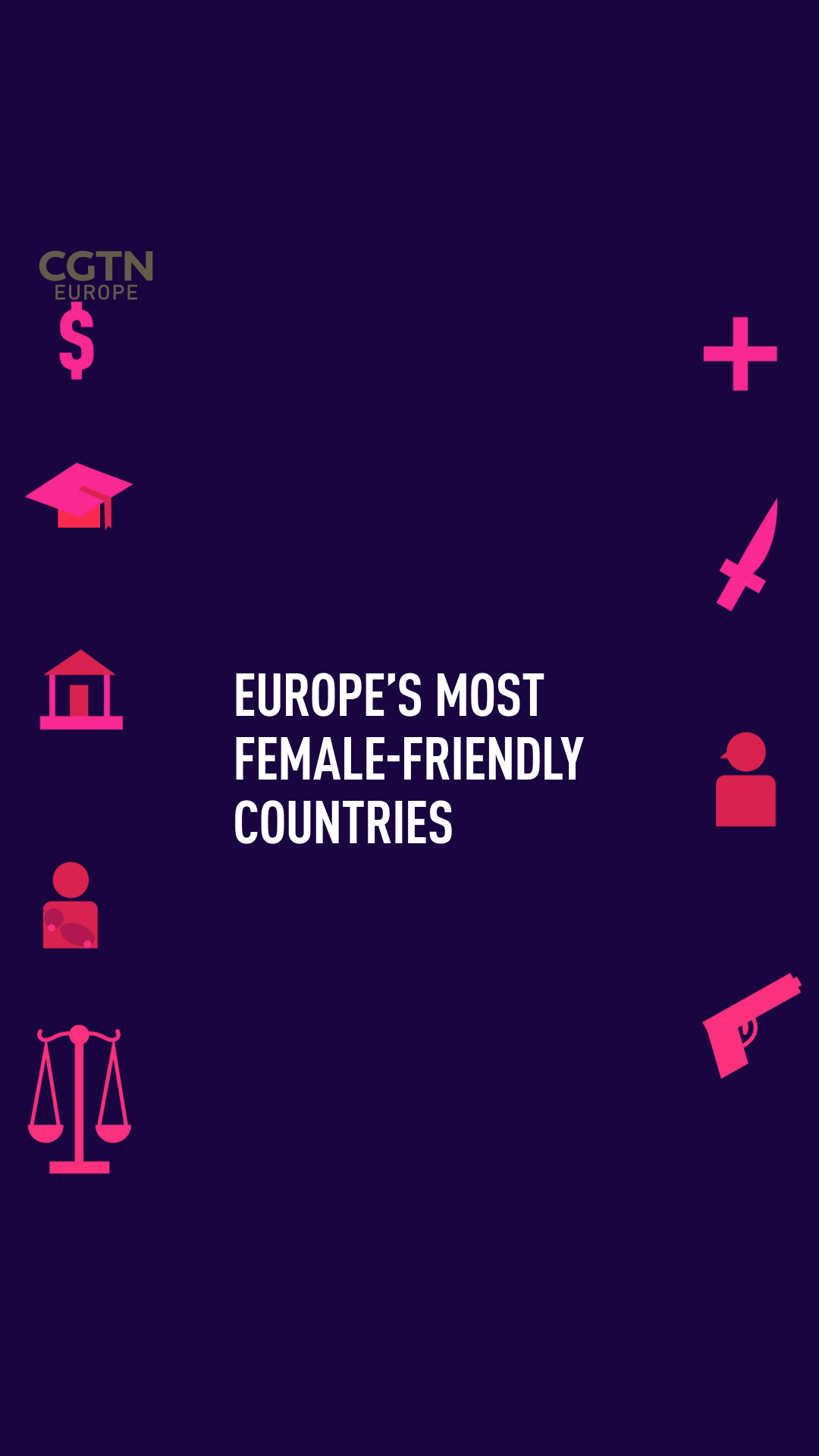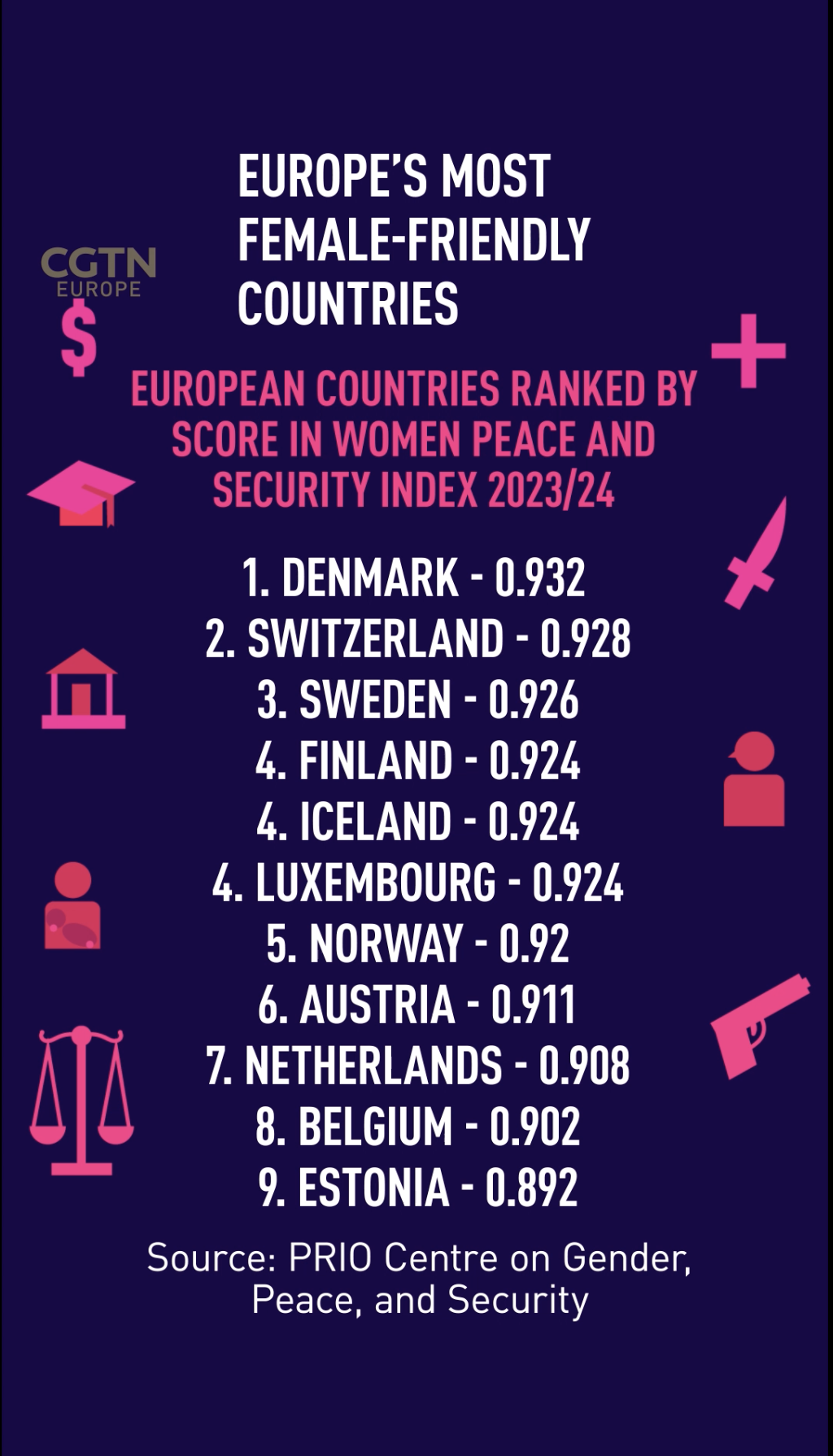According to new research that ranks countries according to the status of women worldwide, Denmark is the best country to live, while inside Europe, Ukraine is currently the worst place to be a woman.
The latest edition of the Women, Peace, and Security (WPS) Index, released on Tuesday, scores 177 countries on women's status, comparing diverse indicators ranging from economic participation, to health, to risks of violence, revealing what it called "glaring disparities around the world."
In this year's Index, Denmark topped both the European and global rankings, receiving a 0.932 rating out of 1 – more than three times higher than Afghanistan at the bottom of the list. In fact, many of the best places in the world to be a woman are in Europe, according to the research: 16 of the top 20 nations are on the continent, while all five Nordic countries rank in the Index's top seven.
Here's what the breakdown looks like in Europe:
01:00

Southern European nations and the Balkan states tended to be lowest on the index, while Northern and Central European states tended to score higher. Overall, the report says that countries where women are doing well tend to be more peaceful, democratic, prosperous, and better prepared to adapt to the impacts of climate change. It added that these impacts are more strongly correlated with women's status than they are with GDP.
However, it stressed that the climate emergency, large-scale forced displacement, armed conflicts, and the multiple consequences of the COVID-19 pandemic were starting to "undermine the status of women and threaten to roll back decades of progress."
The report stressed that "all countries on the index have room for improvement, and many perform considerably better or worse" on some indicators than on others, underlining the importance of measuring women's status "in its many dimensions." According to the report's correlations between the Index and other global indices, societies where women are doing well tend to be more liveable overall, which it said "underlined the importance of investing in women."
READ MORE:
Iceland women's strike: 'A lot to fight for' to achieve gender justice
Gender is the key issue in new OECD statistics, says migration expert
A bear necessity? Romania divided over caniform cull
Co-authored by the Peace Research Institute Oslo (PRIO) and Georgetown University's Institute for Women, the Index considers 13 different indicators of the status of women, including education and perceptions of safety, parliamentary representation and maternal mortality, and legal protection and proximity to armed conflict.
In terms of the highest perceptions of community safety, at the regional level, 83 percent of women in East Asia and the Pacific reported feeling safe, while Latin America and the Caribbean has the lowest rating in this field, at 40 percent. Meanwhile, with a stark uptick in battle-field related deaths in 2022, the report stressed that armed conflict not only put women at immediate physical risk; it also increased maternal deaths, amplified risks of gender-based violence, lead to disproportionate levels of school dropouts for girls, and created barriers to women's livelihood opportunities.
The countries that were lowest on the global Index were unsurprisingly countries that are classified as Fragile States, nations where there are ongoing wars or there is a particularly weak state capacity that leaves it citizens vulnerable to a range of shocks. On average in these states, one woman in five has experienced recent intimate partner violence, six women in 10 live in proximity to conflict, and maternal deaths stand at approximately 540 per 100,000 live births, more than double the global average.
Afghanistan, the Democratic Republic of the Congo, Iraq, Syria, and Yemen have been among the bottom dozen countries since the first WPS Index in 2017/18, while Kosovo and Ukraine are currently bottom of the list in Europe. The report notes that gender equity has dipped amid the Ukraine crisis in particular, with more than 81,500 state-based battle-related deaths and hundreds of thousands of women living in close proximity to the fighting. The WPS have stated previously that the conflict was "disproportionately affecting women and girls."

However, there is some good news in the Index. Globally, women's financial inclusion is on the rise, growing from 56 percent in 2014 to 71 percent as of the most recent data for 2021. Over the same period, 50 countries have seen increases of at least 10 percentage points in financial inclusion, topped by Europe's Moldova, whose rates have risen by more than 40 percent.
With financial inclusion critical to women's empowerment – those without their own bank account find it much more difficult to make decisions about their livelihoods, access critical resources, and leave abusive relationships – the report said the uptick was in part thanks to the proliferation of digital finance platforms that were enabling women to manage their money remotely and independently.
However, it also noted that evolving forms of political violence against women online were spreading thanks to the expansion of digital technologies and the scope of political violence beyond the physical domain. "No single actor can eliminate political violence against women. The constantly expanding reach and ever-evolving forms of such violence demand systemic, multipronged approaches that ensure women's immediate safety and tackle the underlying inequalities that condition and give rise to gendered risks for women," said the report.
"The WPS Index reinforces prioritizing investment in women as essential to protecting the security and well-being of everyone in society. The well-being of women and the well-being of nations go hand in hand."
Cover image: Yves Herman/Reuters

Subscribe to Storyboard: A weekly newsletter bringing you the best of CGTN every Friday